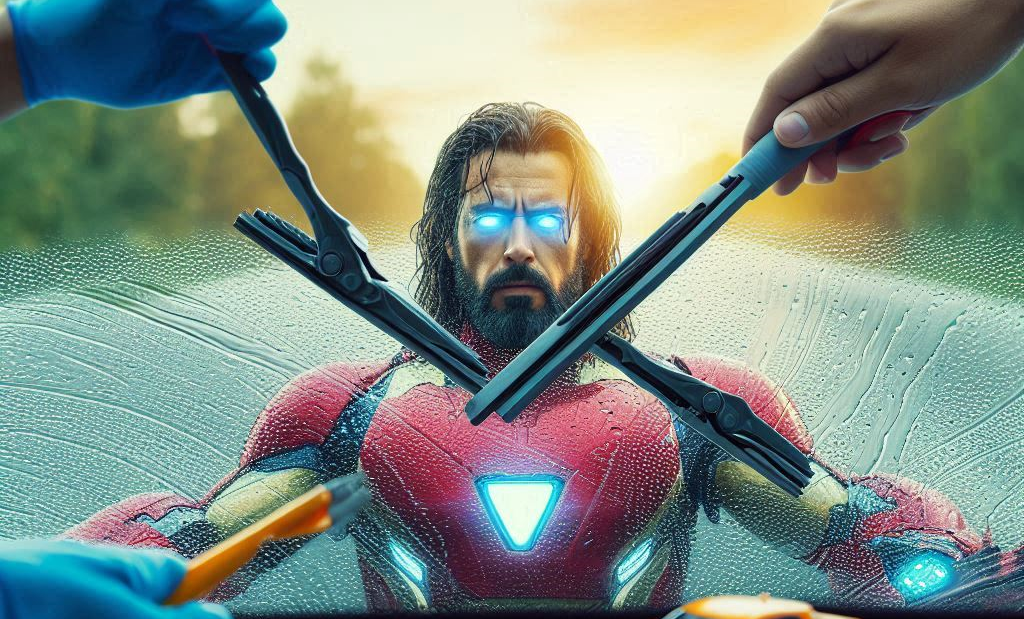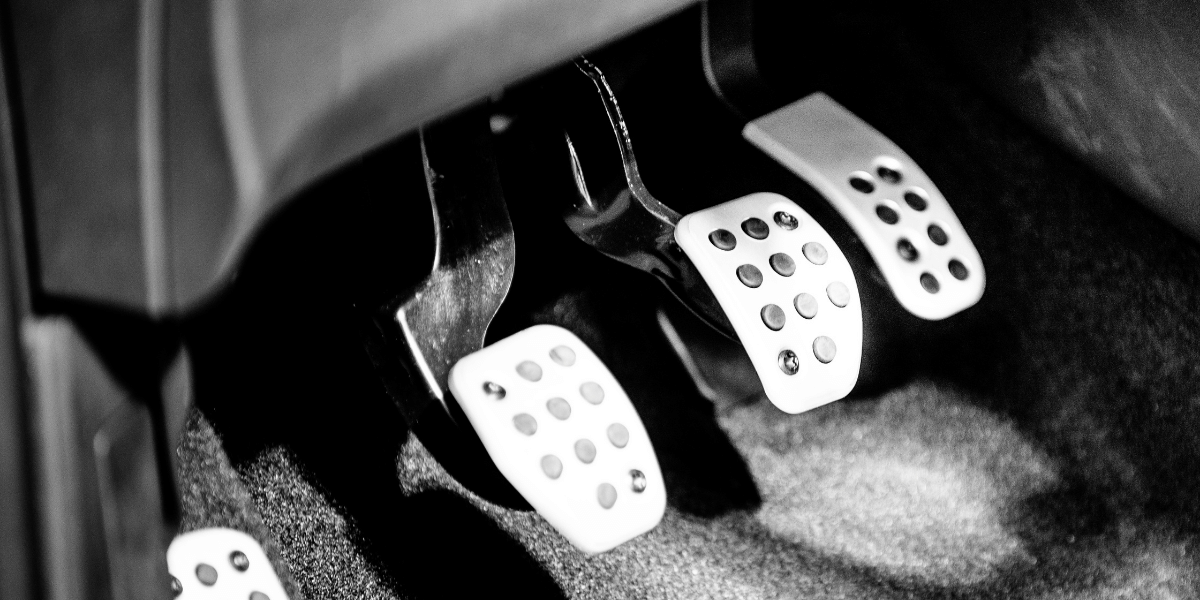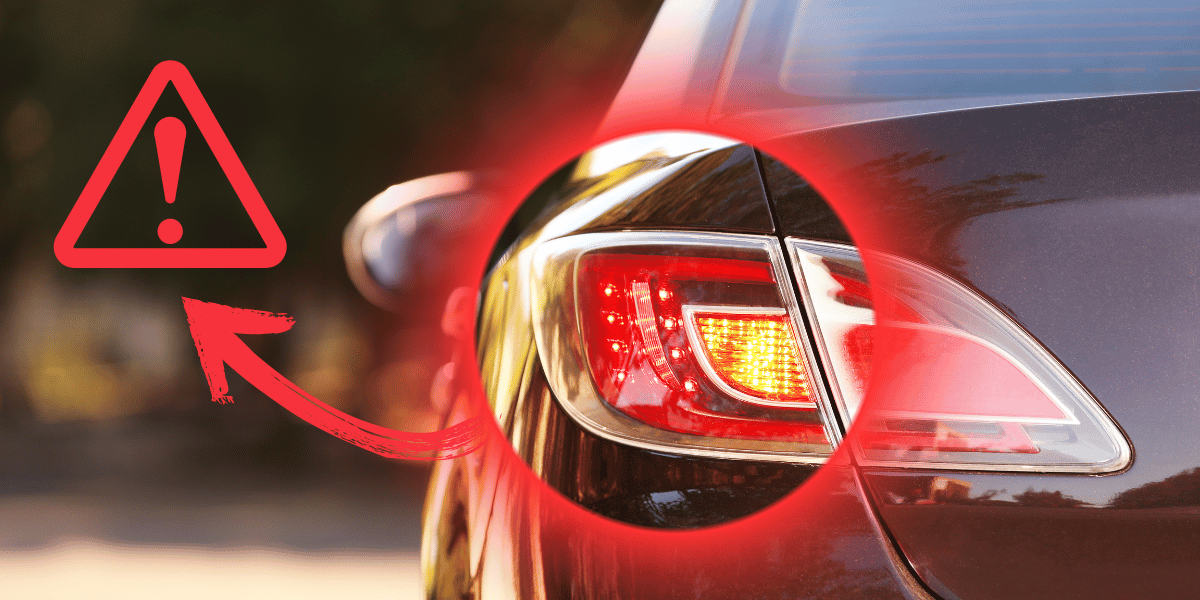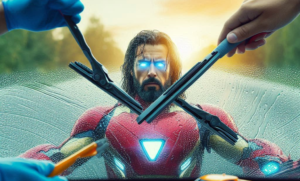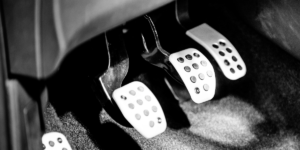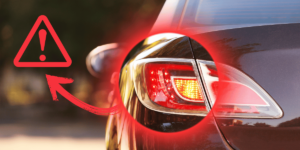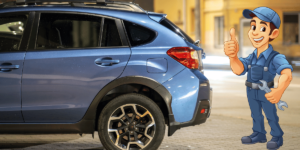As you drive down the open road, the wind in your hair and the sound of your car’s engine can be heard in the background. Everything looks great until all of a sudden, a loose rock on the road hits the side of your car. Even though it’s not a big deal, it makes you think: What if that little rock had hit something more important? The fender, your car’s hidden hero, comes into play here.
We’ll be going into great detail about car hoods in this blog post. It’s important to know what your car’s fenders are for, whether you’re a seasoned gearhead or a new driver. Fascias may look like small pieces, but they are very important for keeping your car and people around it safe. Let us go over the basics, like where to find them on a car, what they do, and the different kinds of fenders that are out there. By the end of this journey, you’ll have a better understanding of these frequently forgotten car parts and why they are so important to your driving experience.
What is a fender and what does it do?
Now that we have your attention, let’s get down to business: Just what is a fender, and what does it do?
- Where on a Car: The fenders are the protective, curved panels that go on the front and back of your car. They go on the sides from the front bumper to the door and the back from the bumper to the door. You can think of them as the shoes that protect your wheels from the outside world.
- As a buffer between the tyres and the weather, the fender’s main job is to protect them. Fenders, which can be made of plastic, metal, fibreglass, or rubber, are very important for a number of reasons:
- Safety from Debris: One of their main jobs is to keep rocks, dirt, and road spray away from your brakes and tyres. This not only keeps your car safe and running well, but it also keeps flying items from damaging it.
- As you drive through a pond, have you ever noticed that a fine mist of water and mud covers your car? This is called Splash and Spray Control. Fenders help stop that by stopping spray from the moving tyres, which keeps your car and the cars around it cleaner.
- Safety: Fenders aren’t just for the health of your car. They also help keep pedestrians and other cars safe by making it less likely that debris will fly off your tyres and cause accidents.
What are Different types of fenders?
Different car models and makes use different materials to make fenders that fit different styles and sizes. Some high-performance cars, like the Lamborghini Gallardo, have fenders made of lightweight polymer, while more common cars, like the Audi A6, tend to have fenders made of aluminium. The type of tyre used is often determined by how the car was made and what it’s meant to do. There are the numbers of fender most popular are steel and plastic fender but there are also a number of other types, such as.
- Steel fender: When it comes to fenders, steel ones are the most popular. They last a long time and are strong, but they can be heavy and cost a lot.
- Plastic fenders: Steel fenders are stronger, but plastic fenders are lighter and cheaper. On sports cars and other light vehicles, plastic fenders are common.
- Aluminium fenders: Aluminium fenders are strong and light, but they can cost a lot. Trucks and cars with a lot of power often have aluminium fenders.
- Fibreglass fenders: These are strong and light, but they can be hard to fix if they break. A lot of race cars and other special cars have fibreglass fenders.
- Fenders made of carbon fibre: These fenders are very light and last a long time, but they are also very expensive. A lot of supercars and other high-end cars have carbon fibre fenders.
How to choose the right fenders for your car?
There are a few factors to think about when selecting fenders for your car:
- The type and brand of your car. The fenders on different cars are not all the same size or shape. When you buy fenders, make sure they are made to fit your unique make and model of car.
- In what way you drive. If you drive off-road a lot, you might want to get fenders made of a strong material like steel or aluminium. If you only drive on roads, you might be able to get away with plastic fenders.
- Your money. Prices for fenders can be anywhere from a few dollars to a few hundred dollars. You should decide how much you can spend on fenders before you go shopping.
- Make sure that the fenders fit your car’s size and shape. You can read this in the owner’s guidebook for your car.
- Pick fenders made from a material that will last. Unfortunately, steel and aluminium fenders cost the most and last the longest. They don’t last as long as metal fenders, but they’re cheaper.
- Check out the finish on the fenders. Finishes and colours for fenders are available. Pick a finish that goes with the rest of your car or that you like the way it looks.
- Before buying fenders, read what other people have said about them. This can help you pick out fenders that are well-made and will fit your car right.
You can always ask a mechanic or a car fan for help if you’re not sure which fenders to pick. They can help you pick out fenders that are right for your car and your wants.
How hard is it to install a fender? Can I install my own fender?
To install fenders on a car, you will need the following tools and materials:
- New fenders
- A wrench or socket wrench
- A screwdriver
- A drill
- Rivet gun
- Rivet nuts
- Masking tape
- Painter’s tape
Step1: First, take off the old fenders.
- To take off the bolts that hold the old fenders to the car, use a wrench or socket wrench.
- Be careful when taking the old fenders off the car.
Step 2: Get ready for the new fenders.
- Drill holes in the new fenders for the bolts that will hold them to the car.
- Put rivet nuts on the new fenders with a rivet gun.
Step 3: Put the new fenders on.
- Align the new fenders with the holes you drilled in the last step before putting them on the car.
- Fix the new fenders to the car with bolts.
4. Put the new fenders to the test.
Double-check that the new fenders fit correctly and don’t get in the way of how the car works.
Here are some extra tips to install a fender on your car:
- Mark the spot where the bolts will go with masking tape before you take off the old fenders. The new fenders will be easy to put on after this.
- Painter’s tape will keep the paint on the car safe while you drill holes in the new fenders.
- Be careful not to make the bolts that hold the new fenders to the car too tight. This might hurt the car or the fenders.
The process of putting fenders on a car is pretty easy. After following the steps above, you should be able to put fenders on your car and keep it safe from road debris.
How do you prepare a fender for painting?
To paint fenders, you will need the following materials:
- Sandpaper (various grits)
- Wax and grease remover
- Primer
- Painter’s tape
- Paint
- Clear coat
- Masking tape
- Spray gun or paint brush
So what do you do?
- Get the fenders ready. If there is any rust or old paint on the fenders, sand them with different grades of sandpaper. Sand the fenders so that they are all the same.
- Get the fenders clean. Make sure the fenders are clean and free of sanding dust by using a wax and grease remover.
- Cover up any spots you don’t want to paint with a mask. You can protect the windows, headlights, and taillights that you don’t want to paint with masking tape and painter’s tape.
- Put on primer. Give the fenders a coat of primer. The paint will stick to the fenders better this way.
- Put paint on. Cover the fenders with several coats of paint. Make sure that you wait for each paint coat to dry completely before adding the next one.
- Put on the clear coat. Cover the fenders with a clear coat. In addition to protecting the paint, this will make the fenders look shiny.
- Take off the painter’s tape and packing tape.
- For a smoother finish, use a spray gun.
- Make sure you paint in a place with good air flow.
- Let the fenders dry all the way before you drive the car.
In conclusion: Putting paint on fenders is a pretty easy process. You can paint your fenders and give your car a new look by following the steps above. You can always ask a mechanic or a car fan for help if you don’t know how to paint your car’s fenders. They can help you paint the fenders right so that you don’t hurt the car.
I have minor fender on my car Is it better to repair or replace fender?
Any car owner can get mad when they see fender damage, like dings or scratches. The good news is that most small fender problems can be fixed without a lot of bodywork or help from a professional. You can fix common tire problems like a pro in your own garage by following the steps in this guide.
1. Repairing Dents
Tools and Materials:
- A plunger
- A hair dryer
- Dry ice
- A rubber mallet
- Body filler
- Sandpaper
- Primer
- Paint
- Clear coat
Here is the step-by-step guide
- Taking the Plunge: Use a shovel to fix small dents. Hardly press it against the hole and pull it out. Most of the time, the force makes it easy to pop out small dents.
- Heat and Cool: Heat the dented area of the metal with a hair dryer to make it more flexible. Then, quickly put dry ice on the spot that is hot. The metal will likely get smaller as it cools quickly, which could help the dent come out.
- Gentle Taps: If the hole won’t go away, use a rubber mallet to tap around the edges of it gently. This might help even out the surface even more.
- Body Filler Magic: You should get body filler if you can still see the dent. Make sure it’s smooth and level before you put it on the broken area. Sand it down until it’s even with the rest of the fender after it dries.
- Prime and Paint: Put on a coat of primer to prepare the surface before painting. Once the filler is smooth after sanding it down. Paint over the fixed area with paint that matches the color of your car. Add a clear coat at the end to protect it and make it shine.
2. Repairing Scratches
Tools and Materials:
- Sandpaper
- Primer
- Paint
- Clear coat
- Making it Smooth: First, sand the scratch very lightly. You don’t want to hurt the fender any more, so be careful not to sand too deeply.
- Prime to Win: Put primer on the area around the scratch. This helps the paint stick to the fender better.
- Paint the Picture: To completely hide the scratch, use paint that fits the color of your frunk. Spread it out evenly to make sure the blend is smooth.
- Clear Protection: Use a clear coat to finish the job. Besides keeping the new paint safe, this makes your fender look shiny and clean.
Do not be afraid to ask a mechanic or another car fan for help if you are not sure about fixing your fenders yourself. They can give advice to make sure the job is done right and stop any more damage from happening.
What is a front & rear fender on a car?
What does a car’s front fender do?
A car’s front fender is the bent piece of metal or plastic that goes over the front wheel. It’s also known as a bumper sometimes. There are two main jobs that front fenders do:
- So that the car and its people are safe from road debris. When a car’s front wheels spin, they can throw up dirt, rocks, and other things. Front bumpers help keep this stuff from hitting the car and its people.
- To make the car stronger against wind. Front bumpers help to even out the flow of air around the car, which can save gas and cut down on drag. Common materials for front fenders are steel, metal, rubber and plastic. Steel fenders are the most popular kind of front fender. They last a long time and are strong, but they can be heavy and cost a lot. But they don’t last as long as steel fenders. Aluminum fenders are cheaper and lighter than steel fenders. To begin with, plastic front fenders are the smallest and least expensive. However, they also last the least amount of time.
What does a car’s rear fender do?
The curved metal or plastic panel that shields the back wheel from view is known as a rear fender on a car. A mudguard is another name for it. There are two main purposes for rear fenders:
- To shield the car’s occupants from traffic debris. A car’s spinning back wheels can launch rocks, mud, and other debris into the air. To keep the car and its occupants safe from harmful debris, rear fenders are helpful.
- To enhance the car’s aerodynamics. Rear fenders aid in reducing drag and enhancing fuel efficiency by assisting in smoothing the airflow around the vehicle.
Usually comprised of steel, aluminum, or plastic, rear fenders are similar to front fenders in construction.
What is the difference between front and rear fenders?
The front and back fenders are different in size and shape. Most of the time, front fenders are wider and taller than back fenders. Front fenders need to cover the bigger front wheels, so this is how it works. And the shapes of the front and back fenders are different. This is because the front fenders have to make room for the headlights, turn signs, and other parts of the car.
What’s another difference between front and back fenders is how they connect to the car. People usually connect the front fenders to the car’s frame. The rear fenders are usually connected to the body of the car. Depending on the make and model of the car, there may be other small differences between the front and back fenders besides these.
Overall, both front and back fenders do the same thing they protect the car and its passengers from road debris and make the car more aerodynamic. But the front and back fenders are not the same size, shape, or way of attaching.
How does a fender differ from a bumper?
The main differences between a fender and a bumper are what they do and where they go on a car. The fenders are on the sides and cover the wheel openings. They keep road debris out and make the car more aerodynamic. The front and back bumpers are there to protect you in case of an accident. They are made of materials that absorb impact. The fenders of a car make it look better, while the bumpers make it safer. Because they have different jobs, maintenance and repair processes are also different.
Here is a table that summarizes the key differences between fenders and bumpers:
| Characteristic | Fender | Bumper |
|---|---|---|
| Location | Wheels | Front and rear of the car |
| Purpose | Protect the car and its occupants from road debris and improve aerodynamics | Absorb the impact of a collision and protect the car and its occupants |
| Materials | Steel, aluminum, or plastic | Plastic, foam, or metal |
It is important to note that the difference between fenders and bumpers can vary depending on the make and model of the car. For example, some cars have fenders that extend to the front and rear of the car.
What components make up a fender assembly?
The components that make up a fender assembly vary depending on the make and model of the vehicle, but typically include the following:
Here is the diagram of fender assembly for single axle
components:
- Fender
- Fender liner
- Fender splash guard
- Fender mud flap
- Fender mounting hardware
- Fender flare
- Fender vent
- Fender reflector
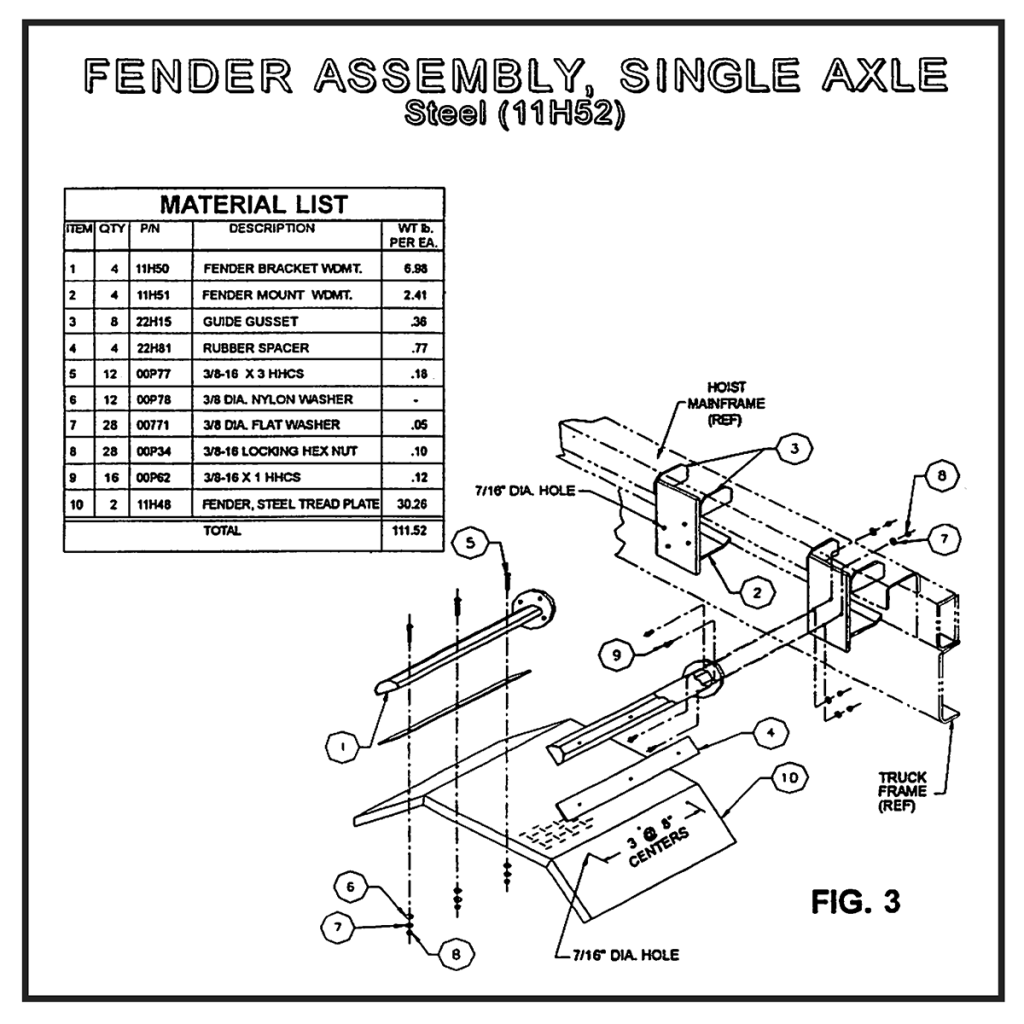
- Fender: The main body of the fender that covers the wheel.
- Fender liner: A piece of plastic or fabric that helps to protect the fender from dirt, mud, and other debris.
- Fender splash guard: A piece of plastic or rubber that helps to prevent water from splashing up onto the fender.
- Fender mud flap: A piece of plastic or rubber that helps to prevent mud and debris from being thrown up onto the fender.
- Fender mounting hardware: The bolts, screws, and other hardware that is used to attach the fender to the vehicle.
- Fender flare: A piece of plastic or fiberglass that extends the width of the fender, typically used on off-road vehicles or trucks.
- Fender vent: An opening in the fender that allows air to circulate, which can help to cool the brakes and tires.
- Fender reflector: A reflective device that helps to improve visibility in low-light conditions.
It is important to note that the specific components of a fender assembly may vary depending on the make and model of the vehicle. It is always best to consult your vehicle’s owner’s manual or a qualified mechanic for information about the specific components of your vehicle’s fender assembly.
How much to replace a fender on a car?
Several things affect how much it costs to repair a fender the type of fender, the make and model of the car, and the mechanic’s hourly rate. When it comes to prices, a new hood should cost between $500 and $2000.
Here’s how much it’s likely to cost to replace the fenders on different types of cars:
- Compact car: $500 to $1,000
- Midsize car: $1,000 to $1,500
- Full-size car: $1,500 to $2,000
- SUV: $1,500 to $2,000
- Truck: $1,500 to $2,000
Keep in mind that these are just guesses. The real cost of replacing fenders may be different based on the above factors. You might be able to get your accident insurance to pay for a new tire. You may have to pay a fee, though.
For those who can’t pay a mechanic to repair your fender, you might be able to do it yourself. You can find a lot of do-it-yourself fender replacement kits online and at stores that sell car parts. But it’s important to keep in mind that replacing fenders can be hard and take a long time. You should let a professional do it if you are not sure how to do it yourself.
Are Fender Flares Actually Worth It?
People often buy fender flares as an extra addition to their cars, but are they really worth the money? Let’s look at the pros and cons of fender flares to help you decide if they’re a good idea for your car.
Pros:
- Better Protection: Fender flares give your wheel wells more area, which makes them safer against road debris, mud, and rocks. They successfully protect the body of your car from damage.
- Better looks: Fender flares can change the way your car looks by making it look more rugged and powerful. They let you change things about your car so that it looks the way you want it to.
- Bigger Tyre Compatibility: If you want to get bigger tyres, fender flares can help make room for them. This is especially helpful for off-roaders who need more space for their tyres.
- Less Splash and Spray: Fender flares help keep water, mud, and dirt from splashing onto your car and other cars nearby when you’re driving in wet or dirty conditions.
Cons:
- Cost: Buying and installing fender flares can be pretty pricey, depending on the type and brand. The total price might include both the flares and having them put up by a professional.
- Problems with installation: Putting on fender flares the right way can be hard, and often requires cutting or making changes to the body of your car. This might need professional help, which will raise the total cost.
- Legal Things to Think About: Laws about fender flares can be different in different places. Some places, especially those that care about road safety, might not let you use fender flares that are too wide or stick out too far. It is very important to follow the rules set by the city government.
- Aerodynamic Effects: Fender flares, especially bigger ones, can change how your car moves through the air, which could affect how well it handles and how much gas it uses. It’s important to think about these effects, especially if you drive to work every day.
In conclusion: Do you think fender flares are worth it? It depends on what you want and what you need. Fender flares can be a useful addition to your car if you want better safety, a unique look, or the ability to fit wider tyres. But you should carefully think about their cost, how hard they are to install, any legal issues, and how they might affect aerodynamics before making a choice. In the end, fender flares are worth it or not depends on your personal taste and how you plan to use your car.
What kind of car fender is on a 2004 Pontiac grand prix?
The 2004 Pontiac Grand Prix has steel fenders. Steel fenders are the most common type of fender, and they are known for their strength and durability. However, they can also be heavy and expensive.
If you are looking to replace the fenders on your 2004 Pontiac Grand Prix, you can purchase steel fenders from a variety of retailers, including auto parts stores and online retailers. Be sure to choose fenders that are specifically designed for your make and model of car.
Here are some additional things to keep in mind when replacing the fenders on your 2004 Pontiac Grand Prix:
- The fenders are attached to the car’s frame using bolts and screws. You will need a wrench or socket wrench to remove the old fenders and install the new fenders.
- You may also need to purchase new fender liners and fender splash guards. Fender liners help to protect the fenders from dirt, mud, and other debris. Fender splash guards help to prevent water from splashing up onto the fenders.
- If you are not comfortable replacing the fenders yourself, you can take your car to a qualified mechanic.
Precautions and Safety Tips to remain your car in good shape
Keep your fenders in good shape with these tips:
- Watch out when you park. When you park, watch out that your wheels don’t hit the curb or anything else.
- Be careful when driving in small places. As you drive in a garage or other confined area, watch out that your front bumper doesn’t hit any walls or other cars.
- Do not drive off-road. You are more likely to damage your tires if you drive off-road a lot. If you have to drive off-road, pick a car with strong tires.
- Frets should stay clean. As dirt and other things collect on your bumpers, they can rust. Clean and wax your doors often to keep them from rusting.
- Fix any damage to the fenders right away. If you see any damage to your rims, fix it right away to keep it from getting worse.
- When moving, pay attention to what’s going on around you. Keep an eye out for other cars, people walking, and road dangers.
- Always leave a lot of room between your car and the one in front of you.
- When you’re moving in bad weather like rain, snow, or ice, be extra careful.
- In the event of a small accident, you should stop somewhere safe and check out the damage. Maybe you can fix the damage yourself if it’s not too bad. In that case, you’ll need to get your car fixed.
As long as you follow these tips, your car will look great and avoid fender damage.
Exploring the Latest Fender Trends and Innovations
Here are some of the newest ideas and trends in the fender business:
- Materials that are lighter and stronger: Companies that make fender are working on new materials that are lighter and stronger than steel and aluminum. In this way, they can make bumpers that last longer and get broken less often.
- Aerodynamic designs: Companies that make bumpers are also making them more aerodynamic. This makes the engine use less fuel and has less drag.
- Integrated sensors: Some companies that make bumpers are adding sensors to them. You can use these gauges to keep an eye on the fenders and find any damage.
- Self-healing fenders: Some companies that make fenders are working on making fenders that can fix themselves. These fenders can fix small harm like dents and scratches on their own.
Here are some specific examples of fender trends and innovations:
- Carbon fiber fenders: Because they are strong and light, carbon fiber fenders are becoming more and more common. A lot of high-performance cars and trucks have hoods made of carbon fiber.
- 3D-printed fenders: This type of fender is becoming more popular. Any car or truck can have 3D-printed fenders made just for it.
- Active fenders: Active fenders are fenders that can change size and shape to make the car go faster or protect it from stones on the road. Even though active fenders are still in their early stages, they could completely change the fender business.
Trends and new ideas in fender are always changing. It’s interesting to think about what new fender technologies might come out in the future. Overall, the fender business is coming up with more and more new ideas. Manufacturers of bumpers are coming up with new technologies, designs, and materials to make them stronger, lighter, more aerodynamic, and last longer. With these new ideas, bumpers are becoming more useful, cost-effective, and efficient.
Frequently Asked Questions
Q: How Do Car Fenders Offer Protection?
A: Car fenders offer protection by shielding the sides of the vehicle from splashing water, dirt, rocks, and other road debris. They prevent damage to the car’s body paint, keep the vehicle clean, and protect other vehicles and pedestrians from splashes and sprays.
Q: What is inner fender liners or wheel well liners?
A: Inner fender liners, also known as wheel well liners, are protective panels inside the wheel wells. They safeguard against debris and moisture, enhancing the fender’s protective function.
Q: What Parts Does A Fender Assembly Have?
A: A typical fender assembly consists of various components, but the main ones include the fender itself, fender supports, and brackets.
Q: What Are Fender Flares?
A: Fender flares are extensions added to fenders, providing extra coverage and protection. They can also enhance a vehicle’s appearance.
Q: How Many Fenders Are On A Car?
A: Most cars have four fenders, one for each wheel well.
Q: Why Do F1 Cars Have No Fenders?
A: F1 cars have no fenders for aerodynamic reasons. The absence of fenders reduces drag and enhances speed.
Q: What are Fender Supports and Brackets?
A: Fender supports and brackets are structural components that help hold the fender in place and provide stability.
Q: Is fender liner necessary?
A: Yes, fender liners, or inner wheel well liners, are essential for protecting against road debris and moisture.
Q: Are fender covers worth it?
A: Fender covers can be worth it for added protection during maintenance or repair work to prevent accidental damage to the fender’s finish.
Q: How to fix rust on a car fender?
A: Fixing rust on a car fender involves sanding down the affected area, applying rust treatment, filling with body filler, sanding, and repainting.
Q: Can I drive with a broken fender?
A: While possible, driving with a broken fender is not recommended, as it can pose safety risks and may be illegal in some areas.
Q: How to stop rust on a car fender?
A: To stop rust on a car fender, it’s essential to remove the rust, apply a rust converter or inhibitor, and repaint the affected area.
Q: Is fender rolling worth it?
A: Fender rolling can be worth it for certain modifications, such as accommodating wider tires. However, it should be done carefully by a professional.
Q: Where is the fender on a car?
A: Fenders are located on both sides of the vehicle, extending from the front bumper to the door on the sides and from the rear bumper to the door on the back.
Q: What is a fender bender on a car?
A: A fender bender is a minor car accident typically involving low-speed collisions that result in minor damage, often limited to the fenders.
Q: What are mudguards on a car?
A: Mudguards, also known as mud flaps, are protective accessories attached behind the wheels to prevent mud, water, and debris from being thrown onto the vehicle’s body.
Q: What are the differences between fender and Gibson?
A: Fender and Gibson are two prominent guitar manufacturers. The key differences include body shape, sound characteristics, and design elements.
Q: Are fenders mandatory on cars?
A: Yes, in many regions, including the United States, fenders are mandatory on passenger automobiles to prevent water, dirt, or other materials from being thrown up by the wheels.
Q: Why are fenders important on a car?
A: Fenders are important for protecting the car from damage due to road debris, maintaining cleanliness, and ensuring the safety of other vehicles and pedestrians.
Q: Can I repair minor fender damage myself?
A: Yes, minor fender damage like dents and scratches can often be repaired by DIY methods, but it’s advisable to consult a professional for more severe damage or if you’re unsure.
Q: Do fenders contribute to a vehicle’s aesthetics?
A: Yes, fenders play a significant role in a car’s appearance, with various styles and sizes available to enhance the overall design.
Q: How can I maintain my car’s fenders?
A: Regular cleaning and inspection can help maintain your car’s fenders. Avoid harsh chemicals that can damage the finish, and promptly address any dents or scratches to prevent further issues.
In conclusion
The fenders are an important part of your car because they keep the car and its people safe from road debris and other dangers. Adding fenders to your car can make it look better and make it more aerodynamic. Foul weather guards come in two main types: steel and plastic. The most common type of bumper is steel, which is known for being strong and long-lasting. However, they can be heavy and cost a lot. You can get plastic bumpers for less money and lighter than steel ones, but they don’t last as long.
There are many kinds of fenders besides steel and plastic ones. Some examples are aluminum fenders, fiberglass fenders, and carbon fiber fenders. It is less usual and costs more to get these kinds of fenders, but they have some benefits, like being lighter and lasting longer. To keep your fenders in good shape, you should wash your car and wax your fenders on a regular basis. You should also check your fenders for damage on a regular basis. If you see any damage, fix it right away to keep it from getting worse.
You should take good care of your fenders because they are an important part of your car. If you keep your bumpers in good shape and use the tips above, you can keep your car safe from damage.

